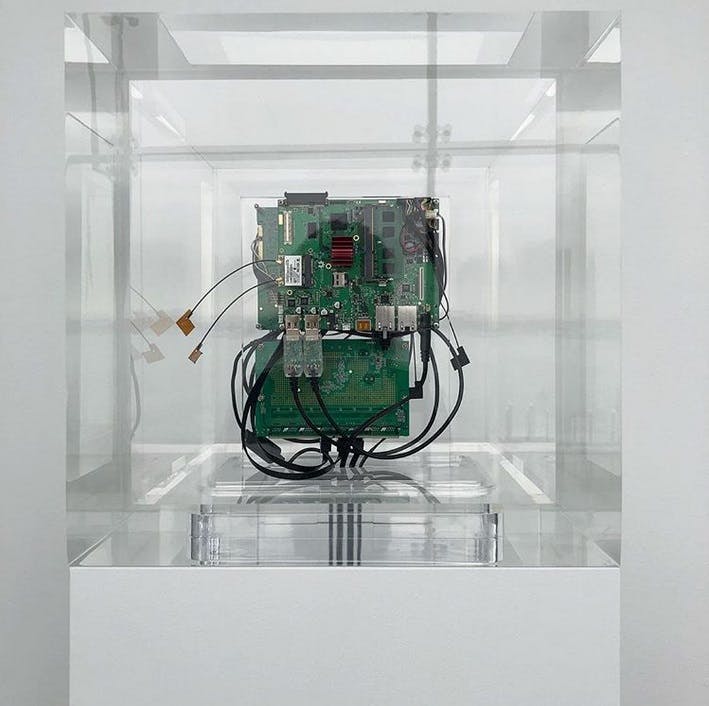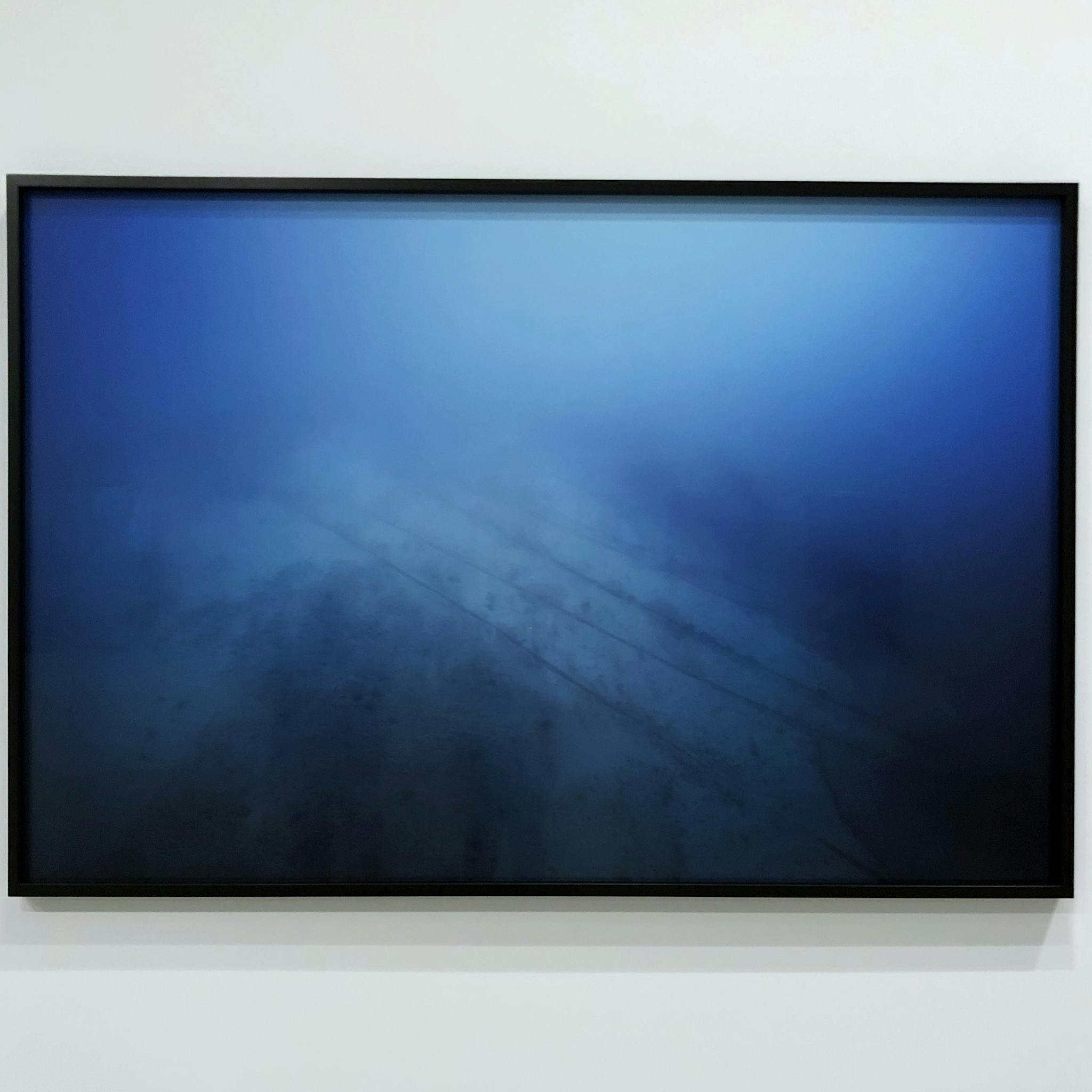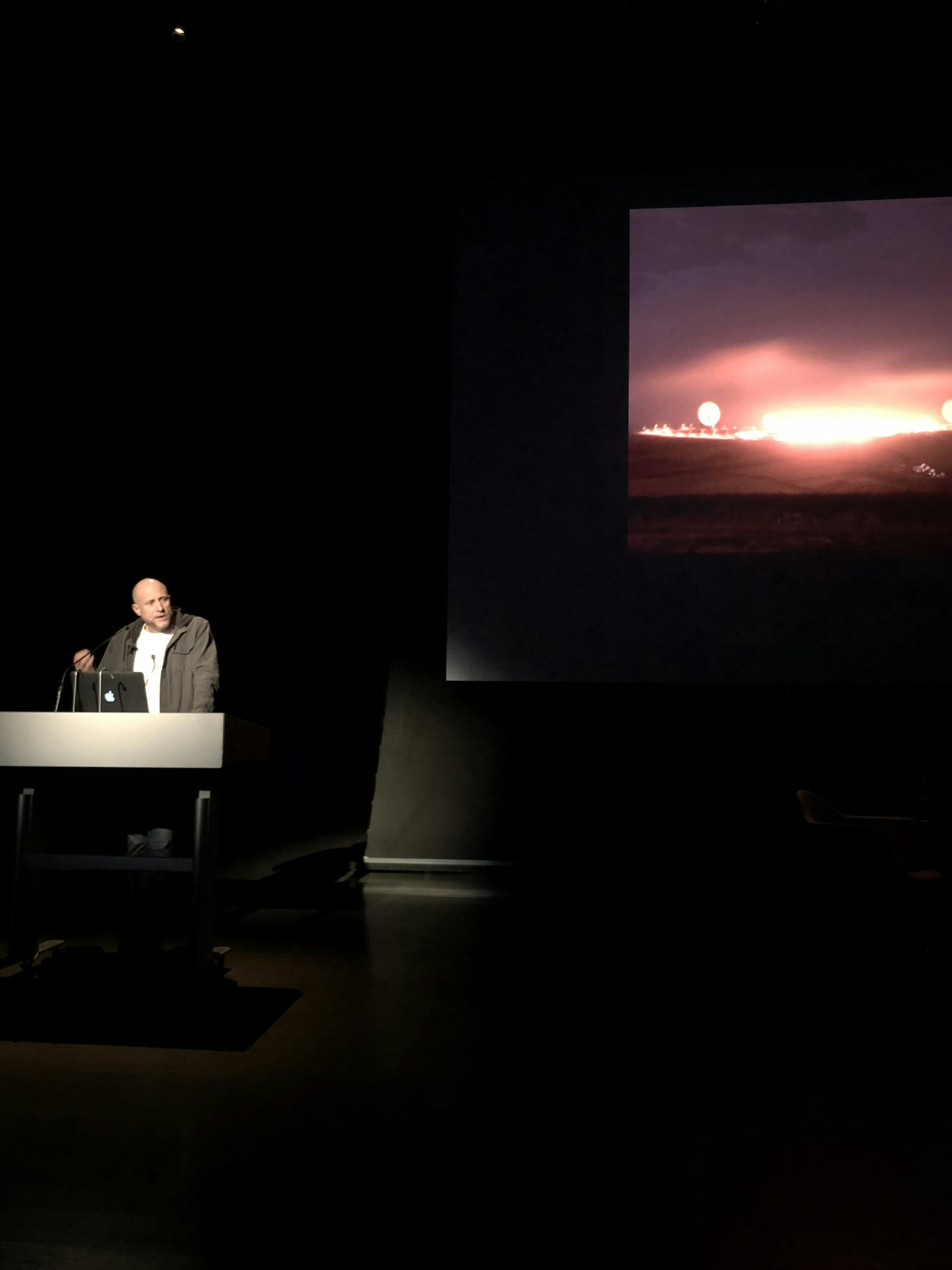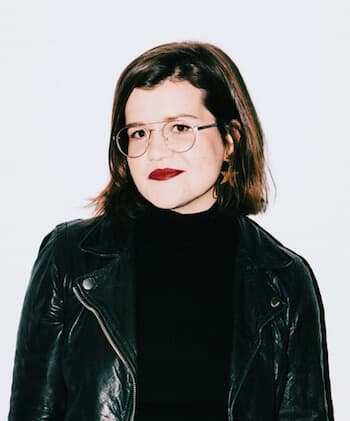Artist Trevor Paglen introduces his work with the simple, and yet seemingly unanswerable question, “What does the internet look like?” Through varying mediums, Paglen gives tangible form to what usually feels both all-consuming and still impalpable: the internet, surveillance, satellite transmission, machine vision, data collection. His works on view now at the Institute of Contemporary art/Boston in Art in the Age of the Internet, 1989 to Today are the perfect example.
The first, titled Autonomy Cube, sits in a gallery of the museum that boosts floor to ceiling windows overlooking Boston harbor, an onslaught of light, water, and the ‘real world.’ An elegant glass cube, mounted on a minimal pedestal, shrouds computer components at shoulder height. To a neophyte it looks like the inside of a laptop, a collection of wires and plates, that signature green of technology. In fact, it is a functioning Tor router, a way to connect to Wi-Fi and then anonymously browse the internet. Routers such as this are used for nefarious purposes worldwide, but in this current moment also speaks to a more universal desire for anonymity and freedom of expression. This piece speaks to another one of Paglen’s abstract and challenging, but absurdly prevalent questions. What if we built an internet that didn’t spy on us?
The other two pieces on view in this exhibition are large, beautiful photographs. While they seem almost phantasmal, their titles give them away as in fact materially linked to the twenty first century human experience. For instance, NSA-Tapped Undersea Cables, North Pacific Ocean, is a color print photography of the material infrastructure of the internet. The second, RAVEN 2 in Corona Borealis (Signals Intelligence Satellite; USA 200), is a picture of a satellite orbiting our planet and transmitting telecommunications that allow our world to work the way it does. Appropriately, these works sit within a chapter of the landmark exhibition titled States of Surveillance, addressing the tension of things being beautiful, while not necessarily being ‘good.’
At Paglen’s artist’s talk at the ICA he discussed topics such as, what does it mean to teach machines to see, how do we account for (and correct for) bias in machine learning, how do you compensate for politics of representation and cultural sensitivities in artificial intelligence? But all of these themes seem to fall under one umbrella for Paglen – something like, what if the internet wasn’t used for evil? This feels especially prescient as this talk happens shortly before the current revelations of Cambridge Analytica and the abuse of social media by the powers that be.
While historian Jimena Canales argues that surveillance has always been the norm, presenting the eleventh century Doomsday Book, a record of the minutiae of medieval England, the scope and accuracy of it has taken on a life of its own in the twenty first century. Despite the fear that these types of themes understandably inspire, Paglen’s message is in the end a hopeful one. He doesn’t advocate that we go off the grid, abandon technology and social media, and hope for the best. (He is on social media himself despite his discovery of secret satellites and the like.) Paglen acknowledges the human work that goes into technologies such as artificial intelligence, and thereby implies there is a way to cultivate and improve it. As Canales says, “Paglen’s work shows AI at its most human.”
After all, he insists that training AI is really a question about how we choose to organize the world. What kind of taxonomies make sense? He imagines an internet that was more like a library. He tries to make the invisible visible, encouraging us to treat surveillance as a civic institution that we should feel authorized to approach as such. In the meantime, his work aims to confront us with these questions, like a harbinger, so that we do not proceed into the future without questioning where we going. His work asks us to really see what is shaping our world, and most importantly, to question it.
“Have you ever wanted to send something anonymously?” ICA Barbara Lee Chief Curator Eva Respini asks him. “Yes,” Paglen replies, without hesitation.
Paglen’s work is on view at the Institute of Contemporary art/Boston in Art in the Age of the Internet, 1989 to Today until May 20th 2018.



